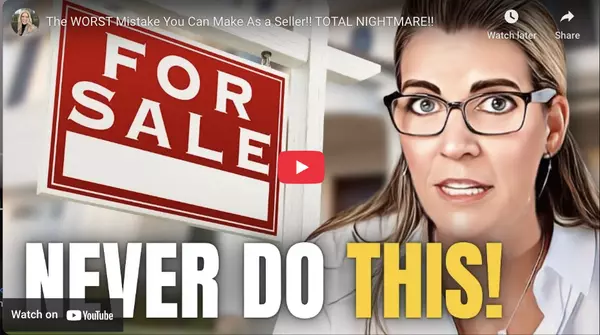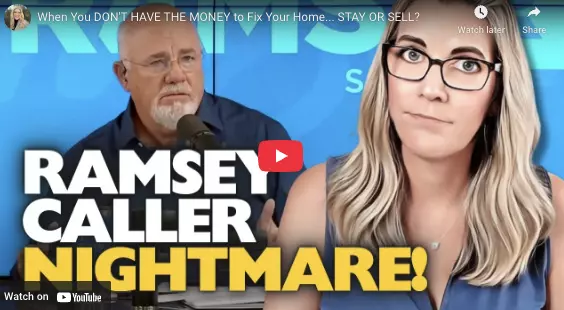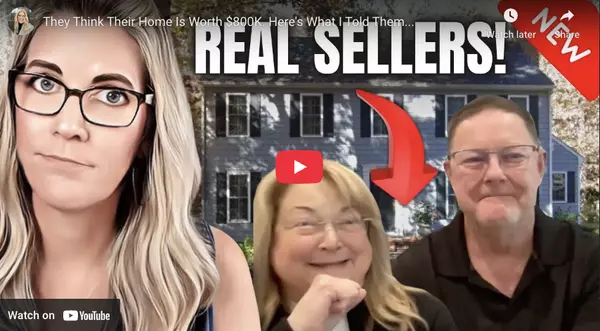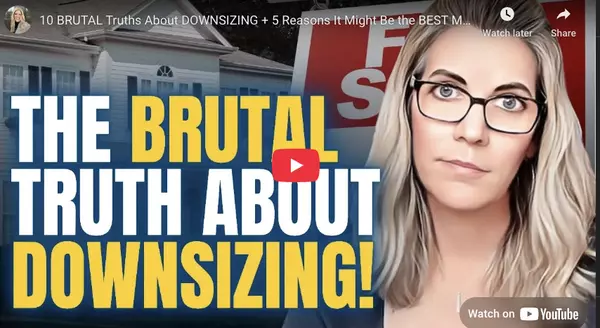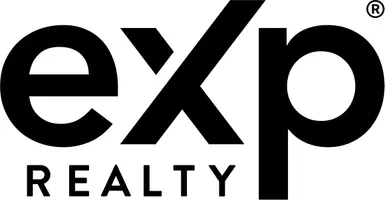Home Prices Are SHIFTING! What is the RIGHT price for a home?
Home Prices Are SHIFTING! What is the RIGHT price for a home?
The real estate market is in a state of flux, and with all the changes happening right now, it can feel overwhelming to figure out how much your home is worth—whether you're buying, selling, or just curious about your home's value. As mortgage rates rise and fall, inventory levels shift, and broader economic and political changes influence the market, it can feel like there’s no way to get a solid, reliable answer on pricing.
So, what is the right price for a home? The good news is that there is a method you can follow to get as close as possible to understanding what your home is worth in this unpredictable market. Let’s break it down.
Why Are Home Prices Shifting?
Before we dive into how to figure out your home’s price, it’s important to understand why the market is shifting in the first place. Home prices can be influenced by many factors:
-
Rising and Declining Mortgage Rates: Mortgage rates affect the overall affordability of homes. If rates rise, fewer buyers may be able to afford homes, potentially lowering demand and, in turn, prices. Conversely, when rates decline, more buyers enter the market, which can push prices higher.
-
Low Inventory: When there are fewer homes for sale, buyers often end up competing for available properties, which drives prices up. If inventory is high, buyers have more options, which can lead to more negotiation power and potentially lower prices.
-
Political and Economic Factors: Leadership changes, elections, and even broader economic shifts (like recessions or booms) can impact buyer confidence, interest rates, and the overall state of the market.
-
Buyer Demand: Is there a large pool of buyers out there? Are people looking to buy now, or are they holding off? These factors will directly influence pricing trends.
Unfortunately, many of these factors are completely outside of your control. However, understanding them can help you strategize better when it comes time to buy or sell.
How to Accurately Price Your Home
When it comes to pricing your home correctly, there is a method that will help you get it right. It’s crucial to take a strategic, well-informed approach. Below is a foolproof method that will bring you closer to an accurate price for your home.
Step 1: Understand the Key Numbers
There are four key pricing concepts you need to grasp in today’s market:
-
Appraised Value – This is the value determined by an independent appraiser who assesses your property based on its condition, age, square footage, location, and recent sales of similar homes in the area. The appraised value is critical for lenders, as they typically won’t approve a mortgage if the appraisal comes in lower than the offered price.
-
Market Value – This is the price a buyer is willing to pay for your home at that moment in time. It may be higher or lower than the appraised value depending on current market conditions (e.g., buyer demand, low inventory, etc.). Market value fluctuates more than appraised value because it reflects real-time buyer behavior and the emotional aspects of the home-buying process.
-
Price to Sell Now – This is the price you’d need to list your home for if you wanted to sell quickly, possibly without making any updates or improvements. This figure typically sits lower than both the appraised value and market value, and it’s influenced by factors such as urgency, competition, and how much work your home needs.
-
List Price – This is the price at which you decide to list your home for sale. You’ll need to take into account both the appraised value and the market value when setting this number, as well as current market conditions (rising or falling prices, the level of buyer demand, etc.).
Step 2: Do Your Research: Use Zillow and Other Tools
A quick way to begin understanding your home's worth is to use platforms like Zillow. Although it’s not a perfect tool, Zillow provides a good starting point by estimating your home’s value based on algorithms that factor in recent sales in your area, square footage, and other relevant criteria. However, remember that Zillow is just a rough estimate.
Here’s a basic guide on how to use Zillow and similar platforms for home price research:
-
Search for Active Listings: Look up homes for sale in your specific neighborhood or school district. Filter these results by size, condition, and price to compare them with your own home. Take note of homes that are similar in size, condition, and features.
-
Search for Recently Sold Homes: Go back 3 to 6 months to see what similar homes have recently sold for in your area. This will give you a better sense of what buyers are actually willing to pay. Pay close attention to the condition of these homes and any differences in location or upgrades.
-
Take a Critical Look at Your Home’s Features: Be brutally honest with yourself. Does your home have features that others don’t? Or is there something major that would deter a buyer, like an unusual layout or an awkward location? Use these insights to adjust your pricing.
Step 3: Understand How the Market Is Shifting
While the appraised value of your home might tell you one thing, the market value can be much more fluid. In a hot market, buyers may be willing to pay more than the appraised value, especially if there’s limited inventory or strong demand. In a slower market, buyers may try to negotiate prices down to match what homes are appraising for.
- Rising Market: If prices are trending upward, you can often price your home just above its appraised value, knowing that buyers may be willing to pay a little more.
- Falling Market: In a down market, you may need to price your home slightly below its appraised value in order to attract buyers and avoid it lingering on the market for too long.
Step 4: Be Objective: Know What Will Affect Your Home’s Price
There are some things about your home that you simply cannot change, like location or lot size. But there are others that can have a significant impact on the price, such as:
- Condition: Homes that are well-maintained and updated will fetch a higher price than homes in need of significant repairs.
- Layout and Features: Is your home outdated? Does it have a feature that’s hard to find in other homes? These factors can push your price up or down.
- Location: Homes in prime locations (e.g., near good schools, public transport, or in desirable neighborhoods) will always be worth more than those in less sought-after areas.
Step 5: Get Expert Help
While it’s great to do your own research, it’s important to also get input from real estate professionals who understand the local market. I recommend working with at least two or three experienced agents who are active in your area and who have a track record of selling homes similar to yours. A seasoned agent can help you navigate the complexities of pricing, negotiate with buyers, and ensure you don’t make costly mistakes, like pricing your home too high and scaring off potential buyers.
Final Thoughts: Pricing Your Home
Ultimately, the goal is to find a price that is both realistic and appealing to buyers. Overpricing your home can lead to prolonged market time, price reductions, and missed opportunities. On the other hand, underpricing can leave money on the table that you could have earned with a more strategic listing price.
To wrap up, pricing a home correctly involves understanding the appraised value, the market value, and your own urgency to sell. It requires research, objectivity, and expert advice. But with the right tools, strategy, and mindset, you’ll be able to price your home accurately and confidently.
If you want more information on this, or need help pricing your home, download my Seller’s Playbook for an in-depth guide. And remember, pricing your home the right way can make all the difference in today’s shifting real estate market. Let’s work together to make sure you’re on the path to success!
Recent Posts



